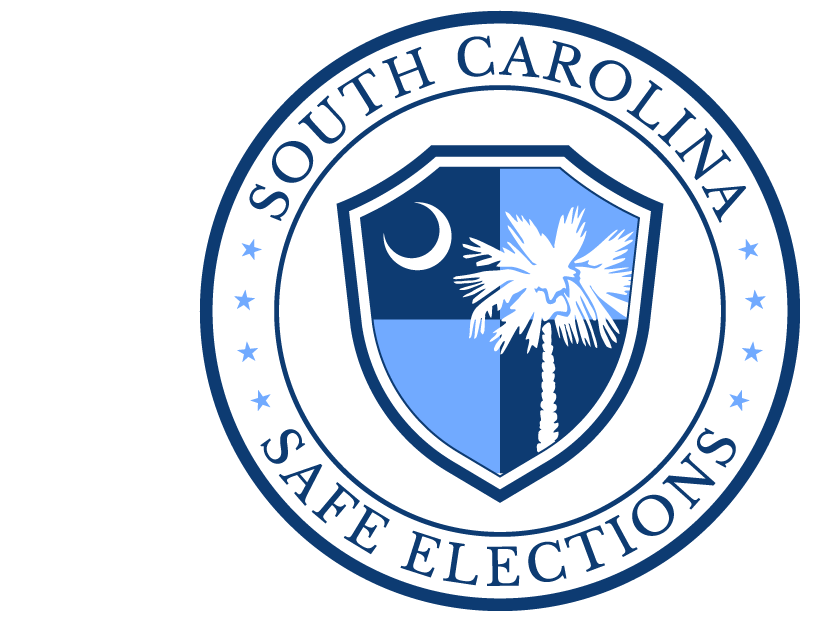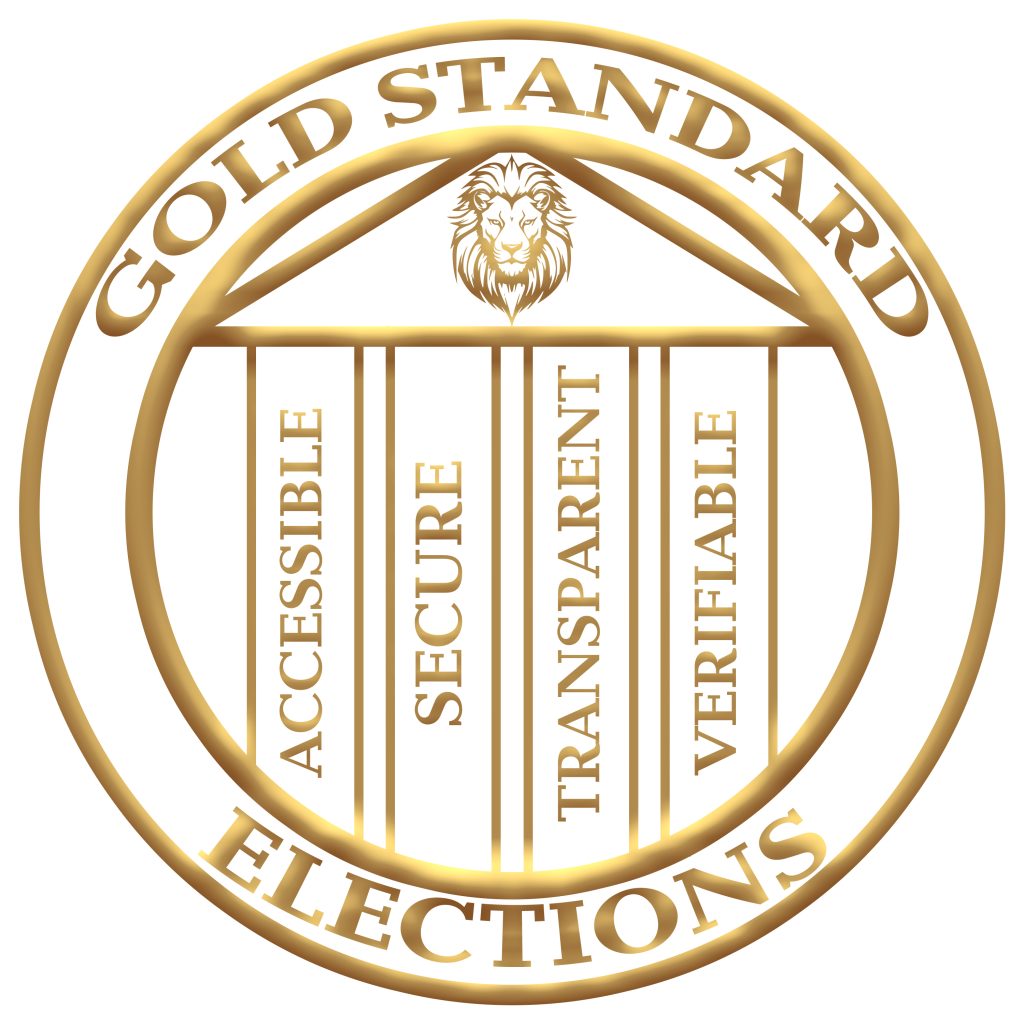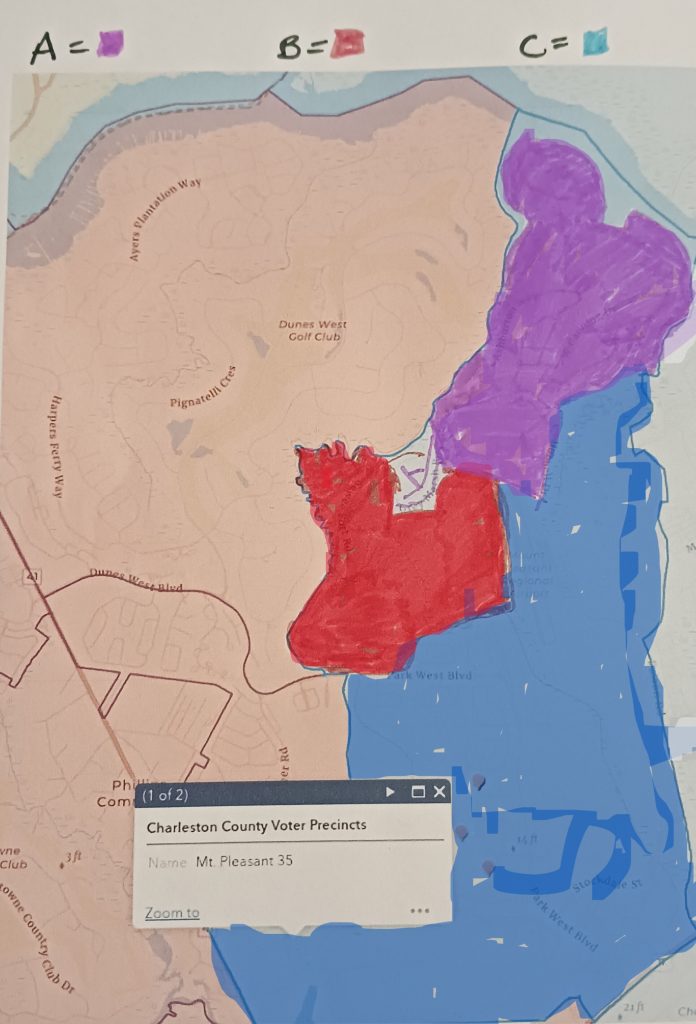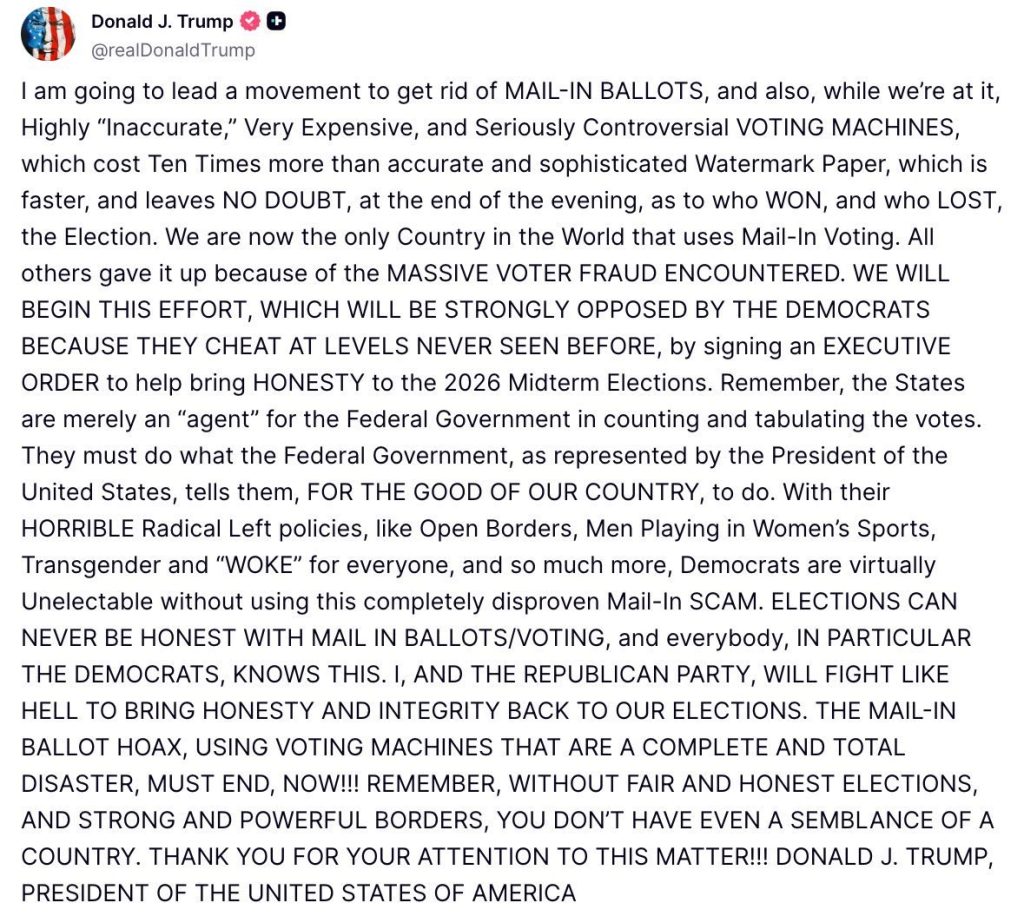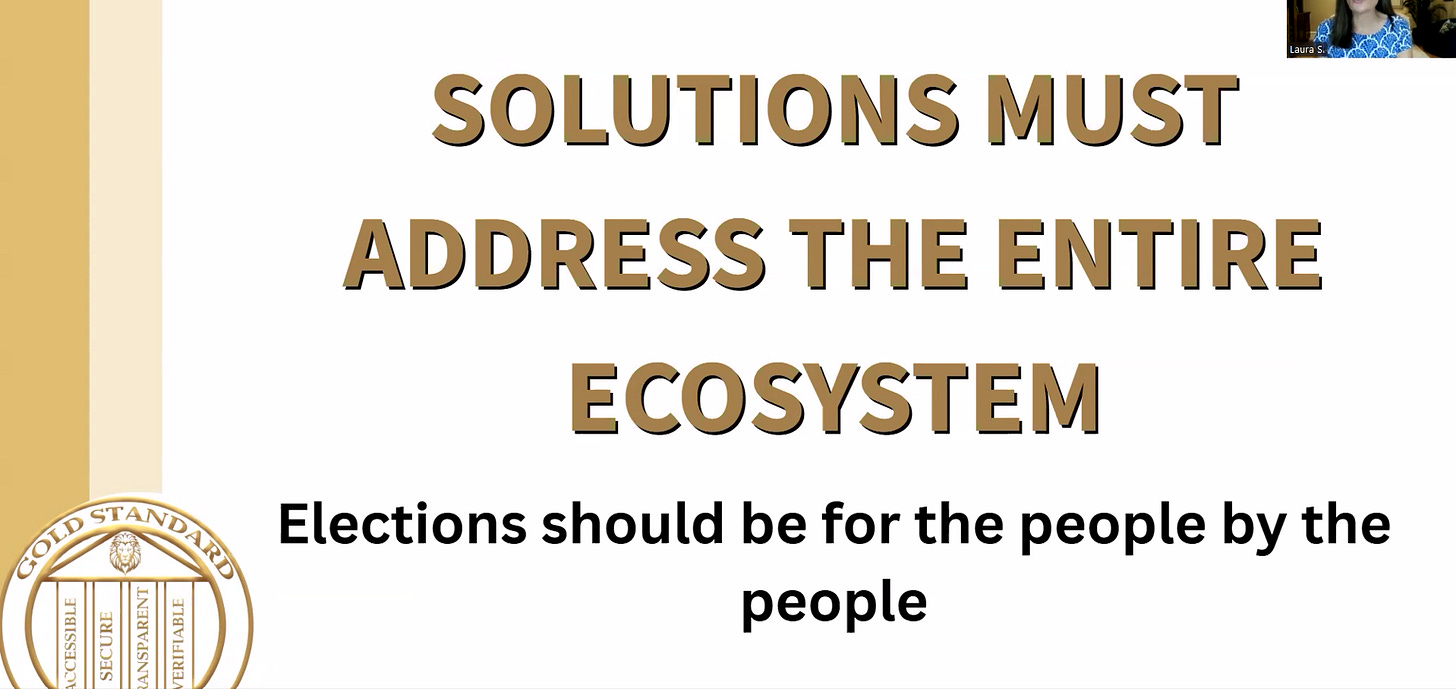Americans want elections they can trust. Electronic voting systems have eroded that trust through repeated vulnerabilities, opaque processes, and unverifiable results. The Gold Standard hand-counted paper ballot system restores confidence by being accessible, secure, transparent, and individually verifiable — all while remaining faster and far less expensive than most people believe.
On November 14–15, 2024, more than 110 citizens from four states gathered on two weeks’ notice to conduct a full-scale mock election and optimization tests. Using real ballots from past elections, volunteer teams hand-counted thousands of votes across 12 races with bipartisan oversight, video documentation, and rigorous reconciliation. Ninety attendees were also certified in the method.
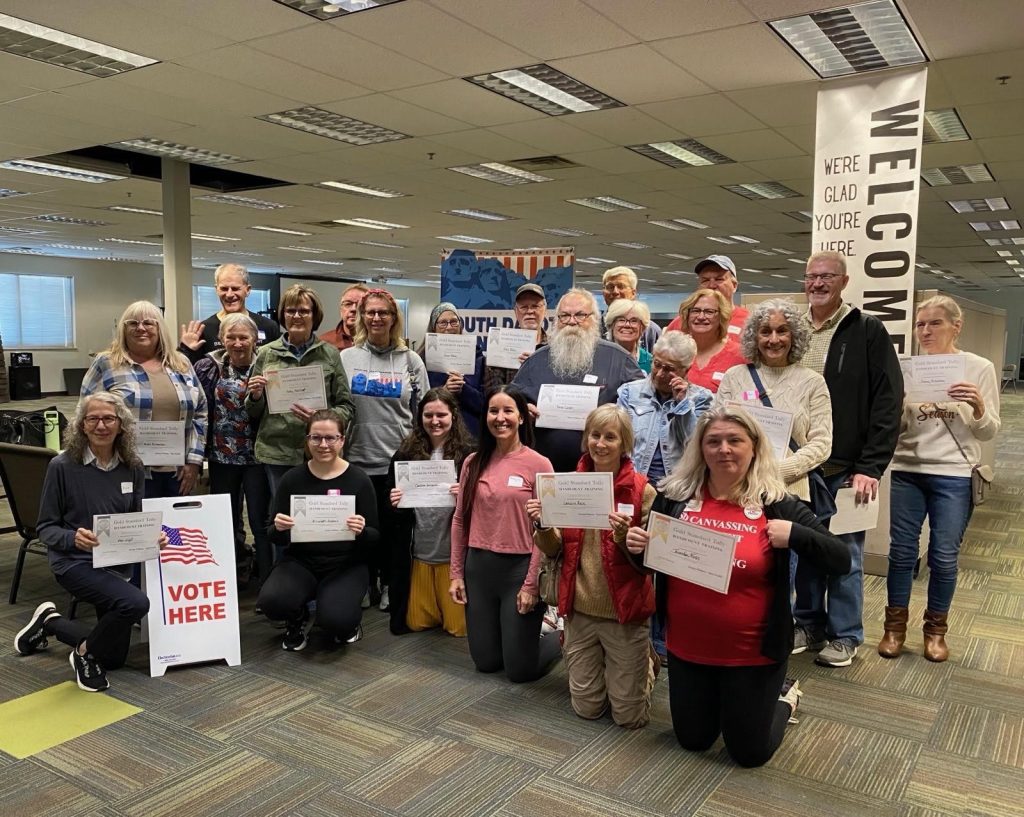
Key Findings
- A precinct of 1,000 ballots with 12 races can be fully counted and reported in roughly 4.5 hours by four small bipartisan teams.
- The process is more accurate than machine tabulation because human reviewers catch voter intent that machines routinely miss (circles instead of filled ovals, stray marks, write-ins with no filled bubble, etc.).
- Reconciliation at every 25-ballot batch catches errors instantly.
- Volunteers overwhelmingly preferred the transparency and reported higher confidence in the results than with any machine system they had previously experienced.
- Total cost per voter is a small fraction of current electronic systems once equipment leases, software licenses, storage, and maintenance contracts are eliminated.
If this proven method can be completed on election night, at a lower cost, with greater accuracy and public trust, the primary objections for hand-counting disappear.
Test Objectives
- Simulate a realistic county election hand-count for two 1,000-ballot precincts.
- Refute the narrative that hand-counting is too slow, error-prone, or logistically impossible.
- Identify variables that maximize speed and accuracy.
- Demonstrate that decentralized, citizen-overseen hand-counting on paper is the true Gold Standard for election integrity.
Test Design
Location: A typical American polling place — a church fellowship hall in Sioux Falls, SD.
Volunteers: 75+ citizens from South Dakota, Minnesota, Wyoming, and South Carolina (2 weeks’ notice).
Ballots: Real hand-marked paper ballots from previous elections.
Structure: Two 1,000-ballot precincts in separate rooms
Room 1 (High-tech): Overhead cameras + batch scanner for digital preservation and live display.
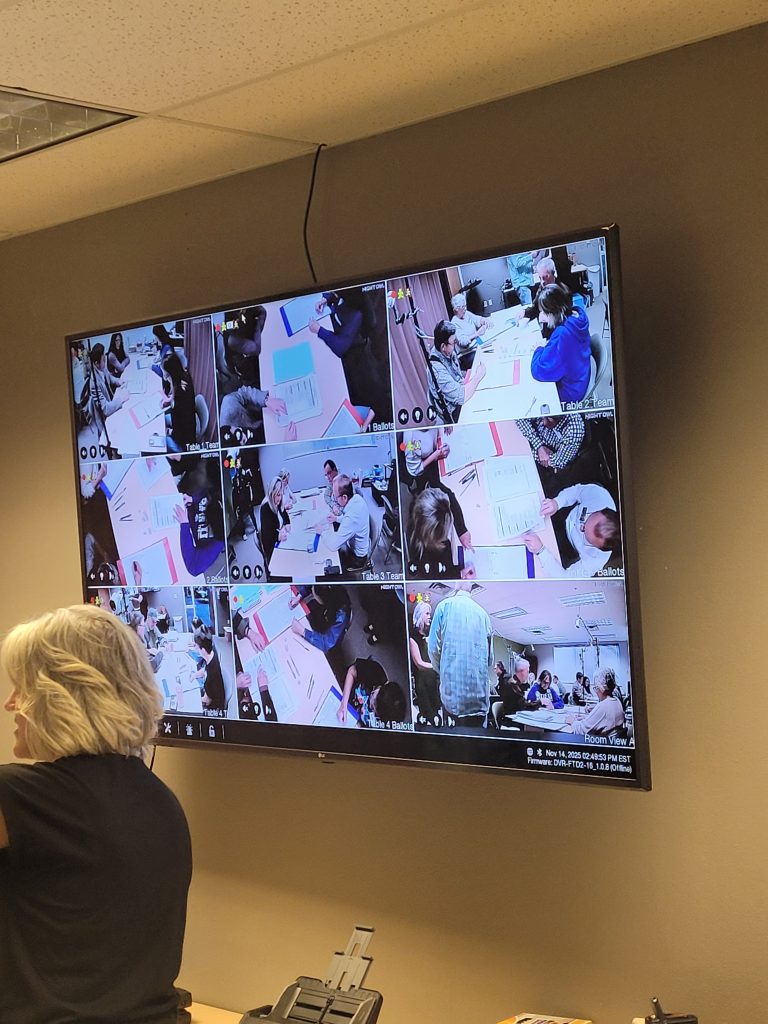
Room 2 (Low-tech): Paper, pens, and people only.
Team composition per table: four people (two callers, two talliers) with mandatory bipartisan balance.
Batch size: 25 ballots — small enough for rapid reconciliation, large sufficient for efficiency.
Documentation: Color-coded tally binders, chain-of-custody forms, live video, and a simple, secure web app for real-time precinct-to-county reporting.
Observed Performance (November 14 Mock Election)
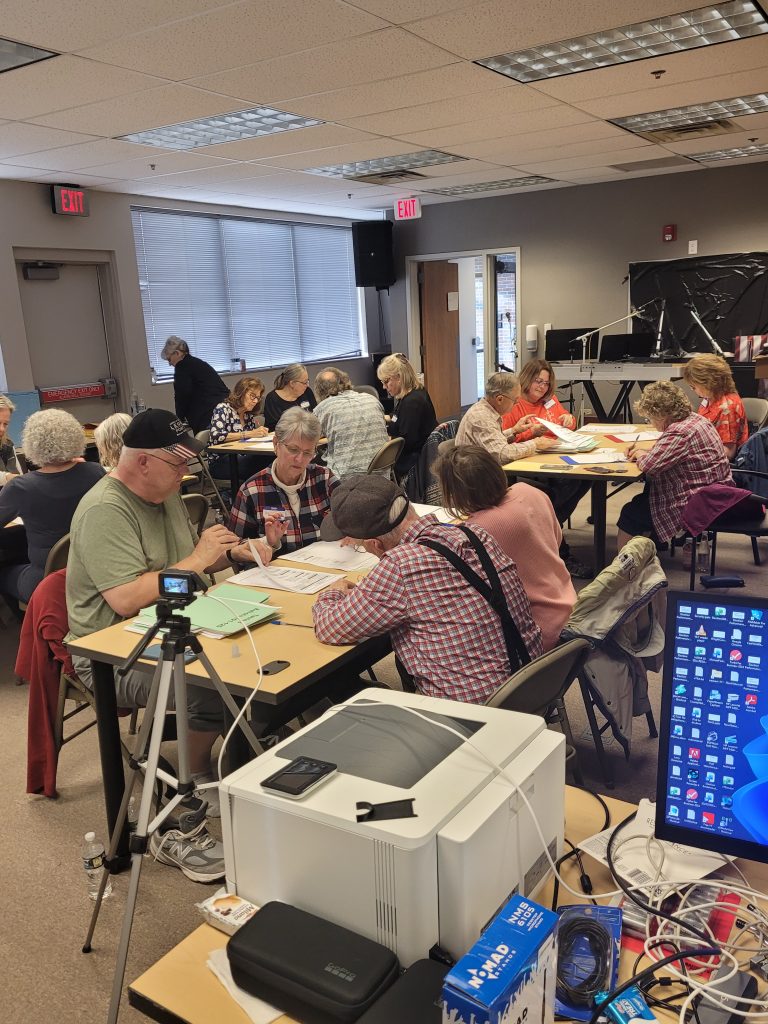
• Counting began at 2:30–3:00 PM.
• Facility access ended at 6:00 PM (3–3.5 hours available).
• In that short window, teams completed an average of 8 races across 1,000 ballots.
• Extrapolating the observed pace: a full 12-race ballot would finish in ≈4.5 hours — easily within election-night reporting windows used by most counties today.
Optimization Tests (November 15 — 83 Wisconsin ballots one race)
The tests below were conducted to optimize the process further and determine whether any specific variable could be “tweaked” to enhance productivity. Here are the results.
| Test | Participants | Test A Time | Test B Time | Tally Sheet | Winner and notes |
| Daubing with markers versus Tally with pens | Two tables of 4 people | Daubing 4:23 & 4:34 | Tally 3:29 & 3:41 | Gold Standard Letter size | Tally faster; markers caused order, bleed-through, and cap management issues. Specific colors were hard to discern. |
| Echo results as you tally in increments of 5; one tallier reveals the cumulative total, and other echoes | Two tables of 4 people | Echo Every 5 3:27 & 3:06 | Non-Echo 3:29 & 3:20 | Gold Standard Letter size | |
| Echo every number, e.g., the talliers call out the candidates’ cumulative number each time, and another tallier echoes | Two tables of 4 people | Echo every number 4:30 & 5:15 | Non-Echo 3:29 & 3:20 | Gold Standard Letter size | Much slower; not recommended unless required by law. Non-Echo and or Echoing 5 times beats the echo of every number. |
| Stack, Sort, and Count method versus the Gold Standard Tally method | Two tables of 4 people | 5:15 & 5:07 | 3:29 & 3:20 | No tally sheet needed for Stack and Sort. | Tally approx. 33% faster. Participants did not prefer this method because it was cumbersome, required excessive handling, needed more space, seemed messy, and may have required a better ballot design. Doesn’t work for school board race, e.g., pick 2 or 3, etc. |
| Count the entire ballot at once vs. Race-by-race (50 ballots, all races) | Two tables of 4 | Tally by race I hr. 30 min. | Tally by ballot 2 hours | Count entire ballot at once vs. Race-by-race (50 ballots, all races) | Took the teams a while to get used to the ballot. Once they did, they picked up the rhythm, but tallying by race was 33% quicker. One participant opined that the whole ballot required more brain processing, and others stated that they preferred the top-down format of the traditional tally sheet |
| Legal versus letter sized tally | Some participants tried the legal-sized tally sheet for a few ballots, but didn’t prefer the size and the amount of hand movement required. |
Clear winners: Race-by-race counting on letter-sized tally sheets with optional “echo every 5” reconciliation.
Volunteer Feedback (universal themes)
“I’ve never felt more confident that every vote was counted exactly as the voter intended.”
“You can see everything — no black box.”
“I would do this on election day in a heartbeat.”
“This is what it looks like for the people to take control of their elections.”
Cost Comparison
Current electronic systems in most counties: $500,000–$2M+ every 8–10 years for equipment, plus annual licensing, maintenance, and programming. Our cost estimates show that the Gold Standard Hand-count method can be deployed at a much lower cost (no more than 30% of the current system’s price), saving counties and states millions of dollars.
Gold Standard hand-count:
- One-time printing of ballots & tally sheets
- Pay Approx. $30/hr.
- Reusable binders and basic supplies
- Optional scanner and camera equipment
Estimated Savings of 70% while dramatically increasing transparency and trust.
Interested? Watch this video to hear about this great endeavor from the state leaders who participated from Minnesota, South Dakota, Wyoming, and South Carolina.
